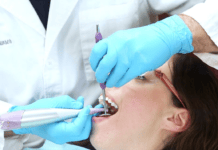In this era, more people are fortunate to know their great grandparents and even their great-great-grandparents ‒ an opportunity that most of our parents or grandparents did not have. The U.S. population of seniors is increasing significantly, and, according to the 2019 census, senior citizens ages 65 and over represent 16.21% of the U.S. population (9% globally).17
By 2030, it is projected that the percentage of U.S. senior citizens will increase to 20%.10,19 Dental hygienists must be able to accommodate the needs of our elderly. As life expectancy increases, the need for oral health increases too.
Systemic Health Awareness
Seniors need to be educated on the importance of their oral health and its relation to their overall health. While older adults are at higher risks of respiratory diseases, Alzheimer’s disease, heart disease, diabetes, and oral cancer, oral hygiene prevention methods and awareness can decrease these incidents and complications associated with them.
Respiratory diseases ‒ Pneumonia is a bacterial or viral respiratory infection that affects the high-risk population and elderly.9 Streptococcus pneumoniae (20% to 85%), Haemophilus influenza (2.9%–29.4%), and respiratory viruses such as influenza, coronavirus, and rhinovirus are the main causes of pneumonia in the elderly.9
The risk factors for pneumonia are cardiovascular disease, lung disease, diabetes, male gender, smoking, and certain medications such as antipsychotic and anticholinergic drugs that are used to treat dementia, insomnia, pain, and depression in older adults.9
Many different treatments and preventive methods are available to reduce the chance of contracting pneumonia. Vaccines, antibiotics, and anti-inflammatory drugs (especially corticosteroids) are the main treatments for pneumonia.9 Hygienists need to consider the “rule of twos” when treating our patients who have experienced pneumonia or any other lung infections. “The rule of twos states that adrenal suppression may occur if a patient is taking 20 mg of cortisone or its equivalent daily, for two weeks within two years of dental treatment.”8
According to Paju and Scannapieco (2007), dental plaque, oral biofilm, and periodontal disease bacteria have shown a direct relationship with pneumonia in high-risk elderly individuals. As a result, the importance of dental hygiene treatment must be emphasized by educating older adults and their caregivers on proper brushing, interdental cleaning, etc.16
Alzheimer’s disease and dementia ‒ Dementia is the general term for loss of mental functioning.1 While Alzheimer’s disease falls under the category of dementia, it is more common as people age. According to Texas Health and Human Services (2021), about 6.2 million Americans suffer from Alzheimer’s disease, which is a progressive brain disorder that affects memory and thinking skills.1,12
A longitudinal study done by the National Center for Health Statistics (part of the Centers for Disease Control and Prevention) found a link between periodontal disease and Alzheimer’s disease.21 In this research, 6,000 subjects were studied for 26 years. The result shows that P. gingivalis, a common bacteria associated with periodontal disease, may be responsible for the brain’s plaque formation in people with Alzheimer’s disease.15
Individuals who suffer from Alzheimer’s disease usually lose their short-term memory.19 Other signs that need to be considered are agitation, anxiety, loss of their ability to recognize objects, forgetting how to perform a task, forgetting that a task has been done, etc.19
As dental hygienists, we always educate our patients on improving their oral health by teaching patients how to brush and clean interdentally properly or individualize their oral hygiene home care by introducing a new oral aid. However, the educational approach may become challenging when a patient is suffering from dementia or Alzheimer’s disease since they may not remember the tasks or easily forget the new instructions.3,19
Fortunately, there are multiple ways to help these patients. If the disorder/disease is in its earlier stages, we can suggest our patients keep a journal of their daily tasks or set alarms for their daily routine. Visiting the dental office frequently may be necessary to arrest the onset of any oral diseases since the prevalence of dental caries, root decay, and periodontal diseases are higher amongst persons with Alzheimer’s disease due to xerostomia and lack of oral hygiene compliance.
If the disease is in its moderate stage, having a reminder such as the daily alarm, receiving calls from a caretaker, or posting notes next to where the task needs to be performed may be helpful. In moderate to severe stages, caretakers may need to be educated on their patient’s oral care, such as brushing and interdental cleaning. The Alzheimer’s Association suggests breaking down the task into multiple steps such as “hold your toothbrush,” “place toothpaste on the toothbrush,” “brush as I am performing,” and so on.3 The use of an electric toothbrush or kids’ toothbrush may be helpful at this stage as well.
Heart disease and diabetes ‒ Chronic heart disease (CHD) is the number one cause of death globally.13 Over half a million Americans die because of CHD yearly.6 Myocardial infarction, angina pectoris, and ischemic heart disease are symptoms of CHD (although they can be symptoms of other conditions as well).7
Multiple studies have found an association between CHD and periodontal disease (P.D.).7 P.D. is caused by bacteria that affect the periodontium. These bacteria travel to the bloodstream through unhealthy gingiva, affecting different organs in the body.7 Multiple studies found periodontal pathogenic bacteria in atherosclerotic plaque and arterial walls.7
P.D. is a destructive disease that is caused by bacteria such as P. gingivalis, P. intermedia, and A. actinomycetemcomitans. In the case of bacteremia, the body’s natural immune response will release interleukin 6 (a type of cytokine), increasing the C-reactive protein (CRP) secretion in the blood.7,12 The increased level of CRP is linked to CHD.7 Although the direct link hasn’t been proven yet, studies suggest a strong association.7
Moreover, P.D. and CHD are complications of diabetes as well.7 Studies show that hyperglycemia makes advanced glycosylation end products (AGEs) that will bind to cell receptors to produce interleukins 6, interleukins 1ß, and TNF-∂.12 “AGEs produced by chronic hyperglycemia can produce hyperinflammatory responses, vascular modifications, altered healing and increased predisposition to infections.”12 Therefore, it destroys alveolar bone and periodontium.
Studies suggest that nonsurgical periodontal therapy such as SRP, routine periodontal cleaning, and adjunct therapies to control bacteria levels can help with controlling glucose levels and insulin secretion.7 As a result, controlling diabetes and its signs and symptoms, such as xerostomia, is specifically important to control the destructive periodontal disease bacteria in the mouth. Controlling diabetes and the oral bacteria may prevent CHD and its associated symptoms.
Oral cancer ‒ Every year, about 3% of diagnosed cancers in the U.S. are oral cancers.4 Over 90% of these oral cancers are squamous cell carcinoma.15 According to the American Cancer Society (2021), the median age for diagnosing oral cancer is 63 years old, with most diagnosed in older adults.11 Additionally, they estimated that about 54,000 people will be diagnosed with oropharyngeal cancer this year, with 10,850 deaths from it.2,3
This cancer “mostly occurs on the tongue, the tonsils and oropharynx, the gums, the floor of the mouth, and other parts of the mouth.”2
Identifying risk factors may help our patients to be vigilant about oral cancer. Tobacco, alcohol, betel, gutka, HPV, male gender, obesity, being over the age of 55, excess sun exposure, poor diet with lack of fruits and vegetables, Fanconi anemia, dyskeratosis congenita, irritation from the denture, poor oral habits, and mouthwash with high alcohol content are among the risk factors.2,3 These risk factors are concerning enough to consider routine oral cancer screenings of less than every 12 months for individuals over the age of 40.22
How to Increase Awareness?
Educating our patients is the main factor in increasing awareness. Patients need to know how important their routine oral care and adjunct therapies are. Hygienists may need to see their elderly patients more often than every six months. Oral hygiene instructions during each appointment have proven to be very helpful in controlling periodontal disease and its complications.
Easily readable brochures and pamphlets regarding each of the mentioned systemic concerns may be helpful. A small poster of a toothbrush, toothpaste, or any other oral health-related pictures in the treatment room might encourage your patient to ask questions and consider changing their lifestyles. For example, having a poster of a cancerous lesion in a mouth of a patient who smokes may encourage patients to maintain their routine oral cancer examinations or maybe quit smoking.
A small piece of printed awareness tip in an oral hygiene kit may be beneficial for the elderly population as well as younger kids and adults. For example, one may find it helpful if they see a statistic about the relationship between xerostomia and root decay in the geriatric population or suggest a challenge to encourage routine oral home care. As a result, increasing awareness may trigger patients’ compliance and improves their oral and overall health.
As clinicians, dental hygienists need to understand each patient’s systemic and oral health. This will help hygienists individualize their patients’ treatments for a better outcome. Oral cancer screening can save lives significantly.
Now Check Out the Peer-Reviewed, Self-Study CE Courses from Today’s RDH!
Listen to the Today’s RDH Dental Hygiene Podcast Below:
References
- Alzheimer’s disease & related dementias. (n.d.). NIH: National Institute of Aging. https://www.nia.nih.gov/health/alzheimers/basics
- Angina (chest pain). (2021, November 8). American Heart Association. https://www.heart.org/en/health-topics/heart-attack/angina-chest-pain
- Dental Care. (n.d.). Alzheimer’s Association. https://www.alz.org/help-support/caregiving/daily-care/dental-care
- Ellington, T.D., Henley, S.J., Senkomago, V., et al. Trends in incidence of cancers of the oral cavity and pharynx – United States 2007-2016. MMWR: Morbidity and Mortality Weekly Report. 2020; 69(15): 433-438. https://doi.org/10.15585/mmwr.mm6915a1
- Fedele, D.J, Jones, J.A, Niessen, L.C. Oral cancer screening in the elderly. J Am Geriatr Soc. 1991; 39(9): 920-925. https://pubmed.ncbi.nlm.nih.gov/1815548/
- Fisher, M.A., Borgnakke, W.S., Taylor, G.W. Periodontal disease as a risk marker in coronary heart disease and chronic kidney disease. Current Opinion in Nephrology and Hypertension. 2010; 19(6): 519-526. https://www.ncbi.nlm.nih.gov/pmc/articles/PMC3084591/
- Gao, S.S., Chu, C.H., Young, F. Oral health and care for elderly people with Alzheimer’s disease. International Journal of Environmental Research and Public Health, 2020; 17(16): 5713. https://doi.org/10.3390/ijerph17165713
- Haveles, E.B. (2018, October 17). Applied Pharmacology for the Dental Hygienist. 8th Ed Elsevier
- Henig, O., Kaye, K.S. Bacterial pneumonia in older adults. Infectious Disease Clinics of North America. 2017; 31(4): 689-713. https://doi.org/10.1016/j.idc.2017.07.015
- Hetzel, L., Smith, A. (2001, October). The 65 years and over population: 2000. U.S. Census Bureau. https://www.census.gov/prod/2001pubs/c2kbr01-10.pdf
- Key statistics for oral cavity and oropharyngeal cancers. (2022, January 12). American Cancer Society. https://www.cancer.org/cancer/oral-cavity-and-oropharyngeal-cancer/about/key-statistics.html
- Llambés, F., Arias-Herrera, S., Caffesse, R. Relationship between diabetes and periodontal infection. World Journal of Diabetes. 2015; 6(7): 927-935. https://doi.org/10.4239/wjd.v6.i7.927
- Mathews, M.J., Mathews, E.H., Mathews, G.E. Oral health and coronary heart disease. BMC Oral Health. 2016; 16(1): 122. https://doi.org/10.1186/s12903-016-0316-7
- Large study links gum disease with dementia. (2020, July 9). NIH: National Institute of Aging. https://www.nia.nih.gov/news/large-study-links-gum-disease-dementia
- Neville, B.W., Day, T.A. Oral cancer and precancerous lesions. C.A. Cancer J Clin. 2002 Jul-Aug; 52(4): 195-215. https://pubmed.ncbi.nlm.nih.gov/12139232/
- Paju, S. Scannapieco, F.A. Oral biofilms, periodontitis, and pulmonary infections. Oral Dis. 2007; 13(6): 508-12. https://pubmed.ncbi.nlm.nih.gov/17944664/
- Population ages 65 and above (% of total population) – United States. (2019). The World Bank. https://data.worldbank.org/indicator/SP.POP.65UP.TO.ZS?locations=US
- Risk factors for oral cavity and oropharyngeal cancers. (2021, March 23). American Cancer Society. https://www.cancer.org/cancer/oral-cavity-and-oropharyngeal-cancer/causes-risks-prevention/risk-factors.html
- Vespa, J., Armstrong, D. M., Medina, L. (2020, February). Demographic turning points for the United States: Population projections for 2020 to 2060. United States Census Bureau. https://www.census.gov/library/publications/2020/demo/p25-1144.html
- What is Alzheimer’s disease? Questions and answers. (2021). Texas Health and Human Services. https://dshs.texas.gov/alzheimers/qanda.shtm
- What is dementia? Symptoms, types, and diagnosis. (2021, July 2). NIH: National Institute of Aging. https://www.nia.nih.gov/health/what-dementia-symptoms-types-and-diagnosis
- Nagao, T., Warnakulasuriya, S. Annual screening for oral cancer detection. Cancer Detection and Prevention. 2003; 27(5): 333-337. https://doi.org/10.1016/S0361-090X(03)00101-6












